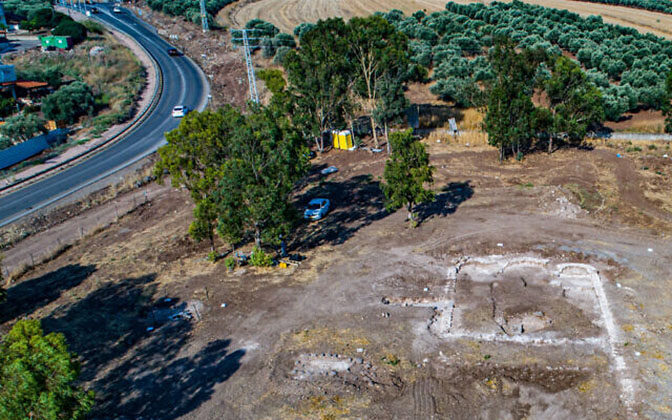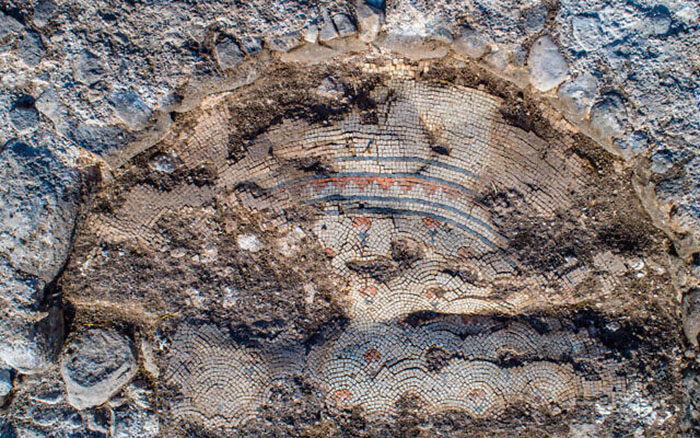
Aerial view of 1,300-year-old church in the village of Kfar Kama, near Mount Tabor. (Alex Wiegmann, Israel Antiquities Authority)
A 1,300-year-old church has been discovered during excavations carried out by the Israel Antiquities Authority (IAA) in the Galilee village of Kfar Kamathe.
The site, adjacent to Mount Tabor, is sacred to Christians, who since the early Byzantine era have identified the area as the location of the New Testament account of the transfiguration of Jesus, The Times of Israel reports.
The IAA researchers and Prof. Moti Aviam of the Kinneret Academic College believe the unearthed church compound may have been part of a monastery.
Lead archaeologist Nurit Feig remarked: “Particular to this church is the existence of three apses, while most churches were characterized by a single apse.
“The nave and the aisles were paved with mosaics which partially survived,” he added. “Their colourful decoration stands out, incorporating geometric patterns, and blue, black, and red floral patterns.”
Based on the pottery typography, The Times of Israel reports that this church was built in the 6th century and abandoned in the 7th.
Professor Moti Aviam said the building boom of Galilee churches was in the 6th century, but there are a few earlier examples, such as a Nazareth chapel dating to the 4th century and a few others dating to the late 4th and beginning of the 5th century.

A series of additional rooms has been partially uncovered adjacent to the church, while ground-penetrating radar has revealed that there are more rooms below the ground, supporting the theory that the large complex is a monastery.
The present excavations are according to sources part of a wider research project on Christian settlement in the Galilee being carried out by Prof Aviam and Dr Jacob Ashkenazi, both of the Kinneret Institute of Galilean Archaeology.
“The new discovery hints at the apparent importance of the Christian village settled in the Byzantine period close to Mount Tabor, a site of primary religious significance for Christianity, identified as the site of the Transfiguration,” the IAA said.

